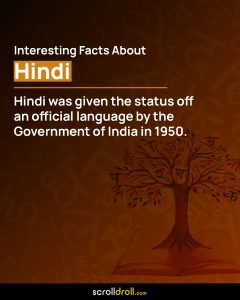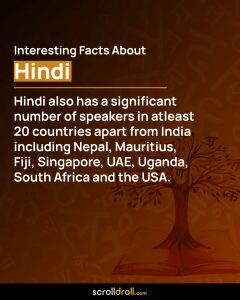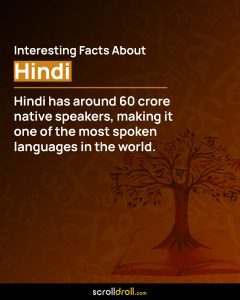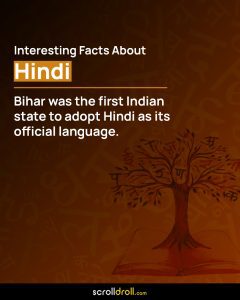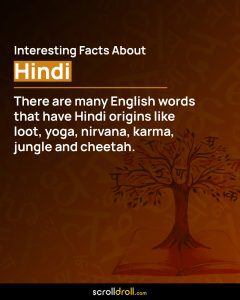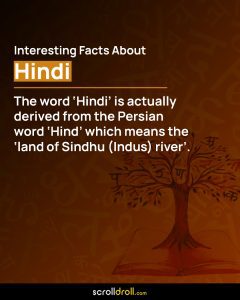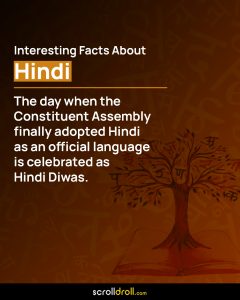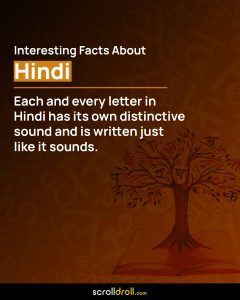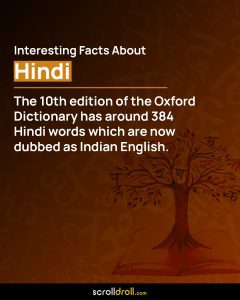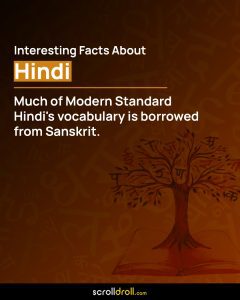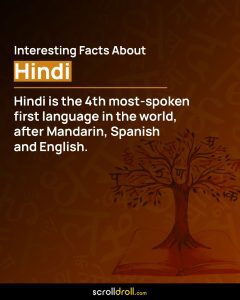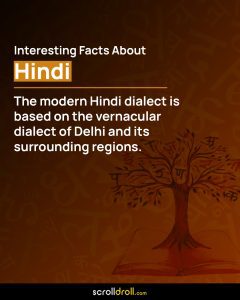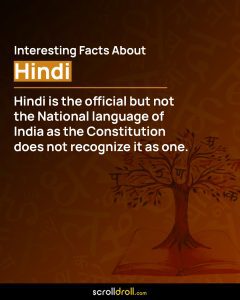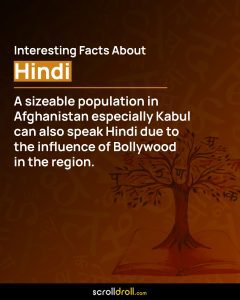15 Interesting Facts About Hindi on Hindi Diwas
On the occasion of Hindi Diwas, India celebrates one of its official and most spoken languages, Hindi. Hindi is actually a descendant of one of the oldest languages in the world, Sanskrit. Pali, Prakrit, and Awadhi also helped shaping the Hindi that we speak today. Although it has gone through several changes over the decades, Hindi still remains intact in its original form through books and novels by Surdas, Maithili Sharan Gupt, Bhartendu Harishchandra, and many more great Hindi writers.
Also read: 20 English Words That Came From Hindi
Hindi is the one common language that binds us together. We belong to different states in India with unique cultures and traditions, our language and our food are so different from each other. But Hindi is one of the factors that keeps us united. Here are some interesting facts about this language.
1. Hindi was given the status of official language by the Government of India in 1950.
On 26 January 1950, when the Constitution was adopted and we became a Republic nation, Hindi written in Devanagari script became the official language of India. Article 343 of the Indian Constitution mentions the same.
2. Hindi also has a significant number of speakers in atleast 20 countries apart from India including Nepal, Mauritius, Fiji, South Africa, Uganda, Singapore, UAE and many others.
Germany, New Zealand, and Yemen also have people speaking Hindi. In America, more than 6 lakh people speak Hindi. In Nepal 8 lakh Hindi speakers are present and the number goes up to 8.9 lakh in South Africa.
3. Hindi has around 60 crore native speakers, making it one of the most spoken languages in the world.
Looking at the population of India where most of the Northern states like Delhi, Punjab, Haryana, Rajasthan, and Uttar Pradesh are Hindi-speaking states, the numbers can go up to crores in India easily. Also, people in Southern India are no different. There is a large number of Hindi-speaking population residing there.
4. Bihar was the first Indian state to adopt Hindi as its official language
In the year 1881, Bihar became the first Indian state to make Hindi its official language. Apart from this, Chhattisgarh, Haryana, Himachal Pradesh, Jharkhand, Madhya Pradesh, Rajasthan, Uttar Pradesh and Uttarakhand, as well as the union territory of Chandigarh and the National Capital Territory of Delhi also have their official language as Hindi.
5. Hindi is taught in over 175 universities around the world.
Out of these over 175 universities, 45 of them are situated in the United States of America. Moreover, there are more than 25 Hindi daily newspapers circulated in many countries apart from India.
6. There are many English words that have Hindi origins like loot, yoga, nirvana, karma, jungle, cheetah, and many such.
The Hindi pronunciations of many words have been changed by adding the letter ‘a’ at the end of the word due to phonetic and dialect differences. In fact, this glaring difference and difficulty in pronunciation could be easily found when Britishers used to change the name of places like Kochi became Cochin or Thiruvananthapuram became Trivandrum during the British period.
7. The word ‘Hindi’ is actually derived from the Persian word ‘Hind’ which means the ‘land of Sindhu river’.
The term Hindī originally was used to refer to inhabitants of the Indo-Gangetic Plain. It was borrowed from Classical Persian ‘Hindi’ meaning “of or belonging to Hind”. The terms “Hindi” and “Hindu” trace back to Old Persian which derived these names from the Sanskrit name Sindhu, referring to the Indus River. The Greek cognates of the same terms are “Indus” (for the river) and “India” (for the land of the river). It is indeed one of the most interesting facts about Hindi.
8. The day when the Constituent Assembly finally adopted Hindi as an official language is celebrated as Hindi Diwas.
Indians on 14 September celebrate National ‘Hindi Diwas’. On this day in 1949, the Hindi language was adopted as one of the official languages of the Republic of India. Written in the Devanagari script, the Constitution of India accepted the Hindi language as the official language of India.
9. Each and every letter in Hindi has its own distinctive sound and is written just like it sounds.
This especially refers to how phonetics works in the Hindi language. For example ‘ph’ in English sounds like the letter ‘f’ when used in a word. A similar thing is not possible in the Hindi language. Here the sound and the letter are very distinctive.
10. The tenth edition of the Oxford Dictionary has around 384 Hindi words which are now dubbed as Indian English.
Jugaad, chamcha, juggi, sevak, niwas, diya, dadagiri, chakka jam, and timepass are some of the words that are of Indian/Hindi origin that are now part of the Oxford dictionary.
11. Much of Modern Standard Hindi’s vocabulary is borrowed from Sanskrit
Hindi’s vocabulary is borrowed from Sanskrit as tatsam borrowings, especially in technical and academic fields. The formal Hindi standard, from which much of the Persian, Arabic, and English vocabulary has been replaced by neologisms compounding tatsam words, is called Śuddh Hindi (pure Hindi), and is viewed as a more prestigious dialect over other more colloquial forms of Hindi.
12. Hindi is the fourth most-spoken first language in the world, after Mandarin, Spanish and English
If counted together with the mutually intelligible Urdu, it is the third most-spoken language in the world, after Mandarin and English. It is also the third most-spoken language in the world including first and second language speakers.
13. The modern Hindi dialect is based on the vernacular dialect of Delhi and its surrounding regions.
Modern Standard Hindi is based on the Delhi dialect, the vernacular of Delhi and the surrounding region, which came to replace earlier prestige languages such as Awadhi and Braj. It has come out from the extraction of Persian and Arabic words from Khariboli.
14. Hindi is the official but not the National language of India as the Constitution does not recognize it as one.
There are approximately 179 languages in India and if dialect is counted then 544 languages according to the Linguistic Survey of India. Out of this 22 are official languages as per the Constitution. Even if we only consider the 22 languages in the official account and choose one of them to be the National language, more than 50% of the Indian population would not have their representation.
15. A sizeable population in Afghanistan especially Kabul can also speak Hindi due to the influence of Bollywood in the region.
The popularity of Bollywood movies, dialogues, songs, and especially actors across the globe has somehow managed to spread Hindi all over the world. People can at least understand this language to some extent.
Today when we look around, we see people taking pride in knowing English which is not bad as this is sort of a universal language now. But what bothers us is when people feel ashamed to talk in their language, Hindi. Not knowing Hindi has become a trend and mostly no one even cares about this language let alone facts. We hope people read these interesting facts about Hindi and maybe understand why it is important to know this language. The irony, though, is lost on us when we choose English to convey this message.


